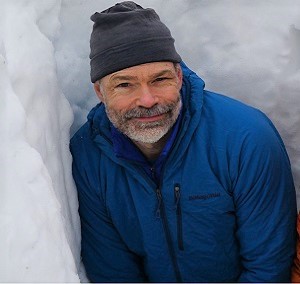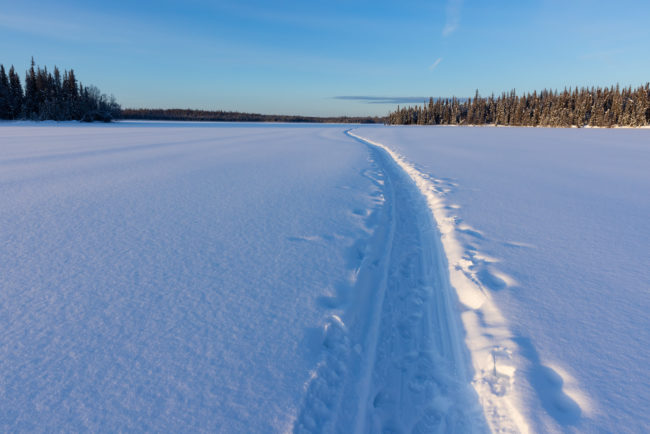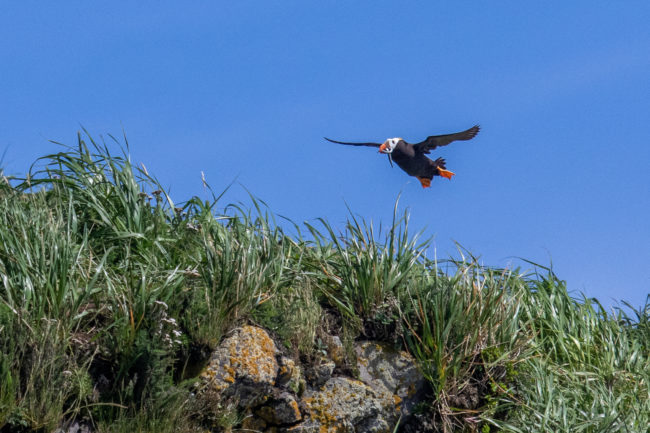With Dr. Jeremy Littell of the Alaska Climate Adaptation Science Center
This presentation was recorded. View below:November Advocacy Report: We keep on keeping on …
by David Raskin, Friends Board President
Since the Department of the Interior announced that a Special Assistant for Alaska will be appointed, there is still no word about who is being considered or any announcement. We are beginning to think that there will be no special assistant appointed and that staff from the previous administration may be assuming more responsibilities.
Arctic National Wildlife Refuge
There are no recent developments on the existing leases, but a second lease sale is required by the existing legislation. However, as more major insurers adopt policies that prohibit involvement in arctic oil and gas development, this adds to the already low interest by major oil companies. We expect that a second lease sale will be another bust like the first sale. In the meantime, U.S. Fish & Wildlife Service (USFWS) and Bureau of Land Management (BLM) continue the lengthy and expensive process of developing the Supplemental Environmental Impact Statement (EIS) required by order of the Secretary. Many conservation organizations, including Friends have intervened on behalf of the government in the federal lawsuit by the Alaska Industrial Development and Export Authority (AIDEA) and the State.
We have no update on the threat to the Coastal Plain by the submission of the SF 299 application by Kaktovik Inupiat Corporation (KIC) for a winter right-of-way across the tundra in a wilderness study area. It should be noted that the request for a winter right-of-way across the refuge may have implications for Alaska National Interest Lands Conservation Act (ANILCA) and the Izembek road controversy. We expect that an environmental review may begin early next year. A draft report on the Kaktovik claim of historical vehicle use for subsistence activities in the Arctic Refuge tundra, including wilderness study areas, is currently under review. Under the solicitor’s opinion in the previous administration, the refuge is open to motorized vehicles, but there has been little activity to date.
Izembek National Wildlife Refuge
The March 16, 2022, panel decision of the Ninth Circuit Court of Appeals in favor of defendants’ appeal overturned our second successful lawsuit that had stopped the illegal land transfer for the proposed road. This disastrous decision rewrote ANILCA to reinstate the land exchange for the road through the heart of the Izembek Wilderness. The far-reaching implications of this decision on 104 million acres of federal conservation units and lands in Alaska are potentially devastating. We await a decision from the Ninth Circuit regarding our petition for en banc review. A decision to rehear the case would nullify the disastrous panel decision and begin the appeal anew. However, denial of our petition would pose great dangers for Izembek, and we will work with our conservation partners to develop other approaches to save the Izembek Refuge and all Alaska federal conservation lands.
Alaska Maritime National Wildlife Refuge
Following the welcome news that the Bureau of Ocean Energy Management (BOEM) canceled the proposed lease sale for Lower Cook Inlet oil and gas development, the Biden administration announced a new five-year leasing plan that includes a lease sale on December 30 .
This resurrects the specter of drilling platforms, underwater pipelines, and greatly increased industrial transportation in Lower Cook Inlet and the high risk of oil spills that could seriously impact lands and wildlife in the Maritime Refuge.
Kenai National Wildlife Refuge
On October 27, the State of Alaska filed a writ of certiorari with the Supreme Court seeking review of the Ninth Circuit’s decision that supported our win in the District Court. The State claims that the case raises questions of “exceptional importance” to states and the Ninth Circuit decision is “unsustainable on the merits.” It is noteworthy that Safari Club International did not join the State in this latest appeal. Based on the Court’s schedule and the timelines in the rules, the earliest we might expect a decision is early December. The Supreme Court rejects most petitions for review.
Yukon Flats National Wildlife Refuge
We have heard nothing further on the results of Hilcorp’s shallow exploration on Doyon Corporation inholdings in the Yukon Flats Refuge. There is great concern that this may lead to oil and gas development that could negatively impact the world-class wildlife and fisheries and subsistence resources in the refuge.
Tracking Puffins in the Kodiak Archipelago. 10/18, 5pm-6pm (AKDT)
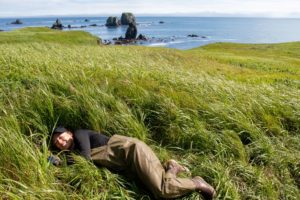
- In Kodiak, join us for the presentation at the Kodiak National Wildlife Refuge Visitor Center with a speaker reception starting at 4:30.
- In Soldotna, a watch party at 5 p.m. at the Kenai National Wildlife Refuge Visitor Center on Ski Hill Road followed by volunteer orientation for those interested.
- In Homer, a watch party at 5 p.m. at the Alaska Maritime National Wildlife Refuge’s Islands & Ocean Visitor Center followed by an opportunity to join Friends and learn about volunteer opportunities with the Refuges.
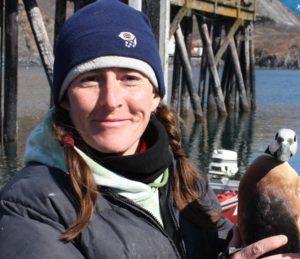
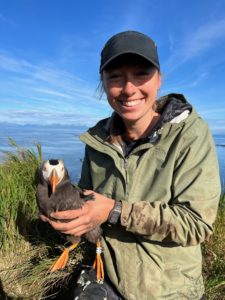 Katie Stoner is an Oregon State University PhD student working in collaboration with Kodiak Refuge for her dissertation research assessing the conservation status and threats to Tufted and Horned Puffins breeding in the Kodiak Archipelago within the Gulf of Alaska. She developed a passion for wildlife and birdwatching while attending summer camps with the Audubon Society of Portland in her hometown of Portland, Oregon. She earned her Bachelor of Science degree in Wildlife Biology and Natural Resource Ecology from the University of Vermont. During her undergraduate degree, she had the opportunity to volunteer for Kodiak National Wildlife Refuge on the refuge’s Kittlitz’s Murrelet Nesting Ecology Project, and she used data from her fieldwork on this project to complete her undergraduate thesis.
Katie Stoner is an Oregon State University PhD student working in collaboration with Kodiak Refuge for her dissertation research assessing the conservation status and threats to Tufted and Horned Puffins breeding in the Kodiak Archipelago within the Gulf of Alaska. She developed a passion for wildlife and birdwatching while attending summer camps with the Audubon Society of Portland in her hometown of Portland, Oregon. She earned her Bachelor of Science degree in Wildlife Biology and Natural Resource Ecology from the University of Vermont. During her undergraduate degree, she had the opportunity to volunteer for Kodiak National Wildlife Refuge on the refuge’s Kittlitz’s Murrelet Nesting Ecology Project, and she used data from her fieldwork on this project to complete her undergraduate thesis. After graduating, Katie gained experience studying avian ecology as part of several different research programs. She contributed to the conservation of threatened and endangered petrels and shearwaters in the tropical mountains of Kauai’s Na Pali Coast and monitored tree nests of the Marbled Murrelet in Oregon’s coastal forests. She lived in remote field camps for her work including in the backcountry of the Kodiak Archipelago, on Chowiet Island in the Gulf of Alaska, and on the windy slopes of Cape Crozier on Ross Island, Antarctica studying Adelie Penguins for Point Blue Conservation Science.
Katie is thrilled to return to Alaska and Kodiak National Wildlife Refuge to learn the secrets of Alaska’s “clowns of the seas.”
